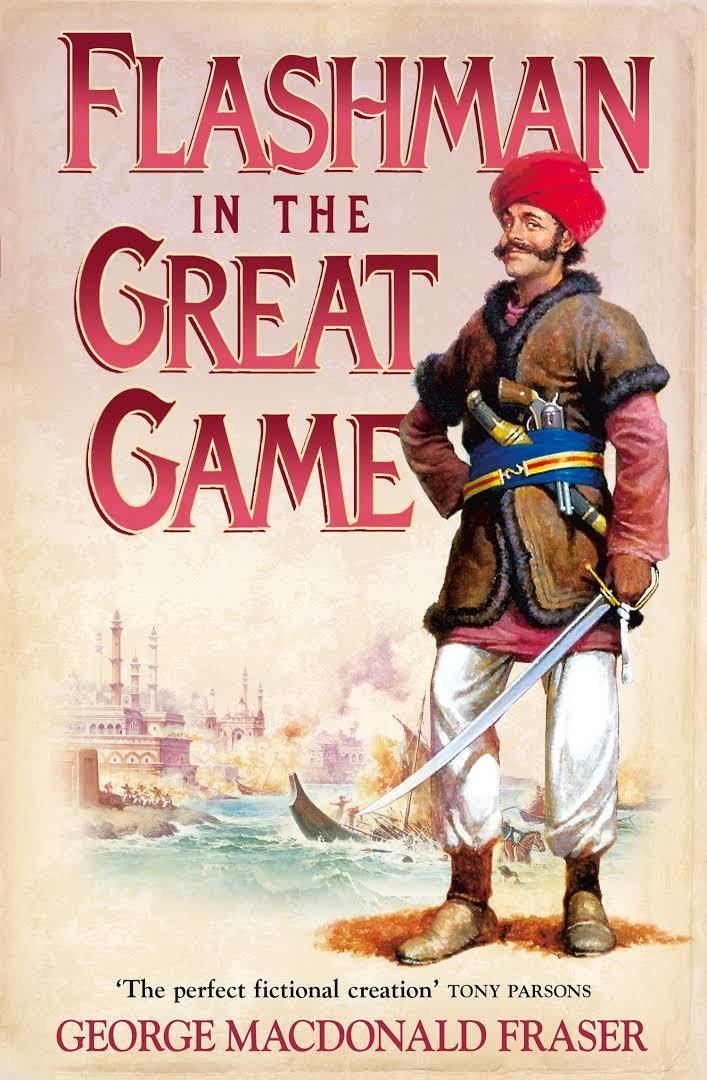8.6 /10 1 Votes8.6
Language English Publication date 1975 Genre Historical drama | 4.3/5 Goodreads Country United Kingdom Publisher Barrie & Jenkins Originally published 1975 Page count 336 | |||||||||||||||||||||||||||||||||
 | ||||||||||||||||||||||||||||||||||
Similar George MacDonald Fraser books, Flashman Papers Series books, India books | ||||||||||||||||||||||||||||||||||
Flashman in the Great Game is a 1975 novel by George MacDonald Fraser. It is the fifth of the Flashman novels.
Contents
Plot introduction
Presented within the frame of the supposedly discovered historical Flashman Papers, this book describes the bully Flashman from Tom Brown's School Days. The papers are attributed to Flashman, who is not only the bully featured in Thomas Hughes' novel, but also a well-known Victorian military hero. The book begins with an explanatory note detailing the discovery of these papers. Fraser also states he has received communications from people either claiming to be a descendant of Flashman or of someone to whom Flashman owed money.
Flashman in the Great Game begins with Flashman at Balmoral as a guest of Queen Victoria. Here he meets with Lord Palmerston, who recruits him to go to Jhansi in India and investigate rumours of an upcoming rebellion among the Sepoys. Flashman skulks through India in various disguises, narrowly avoiding death several times and witnessing first-hand the carnage of the Sepoy Mutiny. Flashman in the Great Game covers the years 1856 to 1858. It also contains a number of notes by Fraser, in the guise of editor, giving additional historical information on the events described.
Plot summary
Flashman not only encounters Lord Palmerston at Balmoral, but also his old nemesis Nicholas Pavlovich Ignatiev. He escapes assassination narrowly and journeys to Jhansi in India, where he meets Rani Lakshmi Bai, the beautiful queen. He listens to her grievances against the British Raj and attempts to seduce her. Whether or not he is successful is unclear, but immediately afterwards Flashman is nearly garroted by Thuggees. In disguise as Makarram Khan, a Hasanzai of the Black Mountain, he takes refuge in the native cavalry at Meerut. Unfortunately, Meerut is where the Sepoy Mutiny begins.
Flashman survives the Siege of Cawnpore and the Siege of Lucknow but ends up imprisoned in Gwalior after an attempt to deliver Lakshmi into British hands. He is released just in time to witness the death of Lakshmi, but then his appearance after two months in prison leads to his misidentification as a mutineer. After being knocked out during the British attack on the Rani's camp, he awakens to something that makes Hugh Rose later wonder that Flashman did not lose his mind - he is gagged and tied to the muzzle of a cannon, about to be executed with other mutineers. Fortunately, quick thinking allows him to communicate with gestures his true ethnicity to his British captors. In an uncharacteristically humane act, he orders the Indian mutineers who were going to be blown away alongside him, to be freed saying "the way things are hereabouts, one of 'em's probably Lord Canning." In this book Flashman often behaves heroically, though his interior thoughts are often - but not always - those of a coward and a cad.
Victoria Cross and Knighthood
At the end of the book Flashman receives the Victoria Cross and finds out he is to be knighted, continuing his knack for being rewarded for heroics despite his efforts to avoid doing anything dangerous. However, his attempt to sneak into Jhansi to convince the Rani to surrender is an act of bravery (and he is nearly killed for his efforts). He also took part in some of the most terrifying actions of the mutiny and even took to defending Cawnpore during the siege. Therefore, this is the first time that one could argue, he did in fact deserve the Victoria Cross and his knighthood, not only for the feats of (unintentional) bravery, but for the horrors he was forced to endure and the initiative he showed in trying to complete his mission. At the end of the book he finds out that he is described - in the recently published book Tom Brown's School Days - as a bully and a coward.
